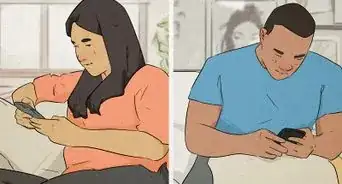This article is based on an expert interview with Kelli Miller, LCSW, MSW, conducted by wikiHow Staff Editors. Kelli Miller is a Psychotherapist based in Los Angeles, California. Kelli specializes in individual and couples therapy focusing on relationships, depression, anxiety, sexuality, communication, parenting, and more. Kelli also facilitates groups for those struggling with alcohol and drug addiction as well as anger management groups. She is the author of “Professor Kelli’s Guide to Finding a Husband” and the award-winning and best-selling book “Thriving with ADHD”. Kelli co-hosted an advice show on LA Talk Radio and is a relationship expert for The Examiner. She received her MSW (Masters of Social Work) from the University of Pennsylvania and a BA in Sociology/Health from the University of Florida.
This article has been viewed 14,030 times.
Friendships can be some of the most rewarding relationships in your life. Good communication between friends should strengthen the care and ease in the relationship. In this video, Licensed Clinical Social Worker Kelli Miller shows you how to express your feelings and needs in your friendships in order to build communication on a foundation of positivity and care.
Key Takeaways
- Communication with your friends should be positive, and it shouldn’t take a lot of effort.
- Use “I” statements when you’re upset about something to avoid arguments with your friends.
- Sandwich constructive criticism between two positive statements when you’re giving your friends feedback.
Video Transcript
The first piece is that you want it to be easy rather than effortful. This is not a coworker or your boss, this is your friend. You want it to feel simple. The second piece is using “I” statements. So “I” statements are when you are going to focus on the pronoun “I” rather than “you.” For example, if you're upset about something, you can say, “I'm feeling upset about this,” rather than targeting the other person with “Why did you do this?” Most likely with “I” statements, the person is going to feel less defensive and is going to be more receptive to what you have to say because you're focusing on how you're feeling and not what they did. I also really like the sandwich method for communication, and that's when you're going to sandwich a piece of feedback between two positive statements. So for example, you're going to start with the positive: “I value our friendship. I love how much you make me laugh.” Then you can slip in the challenge: “I've noticed you often interrupt me when I'm speaking. I know you probably don't even realize it or mean to but it does bother me.” And then you end with another positive: “I feel really great when I'm with you and I want to continue our friendship.” This helps builds communication from a foundation of positivity, which is what we want.



























































